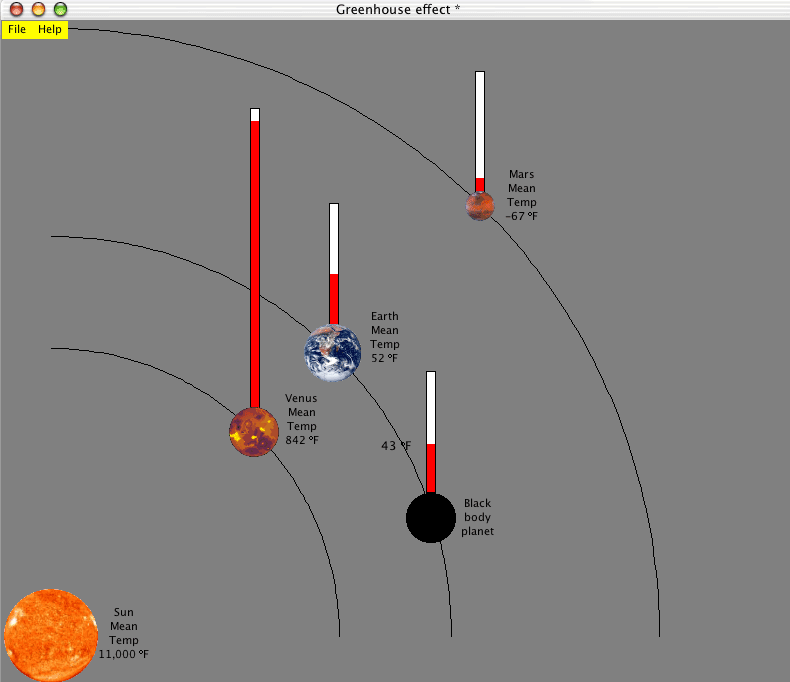Greenhouse Effect
on the Terrestrial Planets
To understand the potential impact of greenhouse gasses on the Earth's temperature it is worthwhile to look at our two closest neighbors, Venus and Mars. Venus is saturated with greenhouse gases but Mars has no atmosphere to speak of.
Notice their temperatures. Venus (840 degrees F), is very much hotter than Earth (52 degrees F) and Mars (-67 degrees F) is a bit cooler. But how do we know that Venus is not so much hotter than the Earth because it is closer to the Sun; it may have nothing to do with the greenhouse effect.
To fairly compare the effect of the greenhouse gases on Venus, Earth and Mars we need some standard that neutralizes the effect of proximity to the Sun. We can do this by introducing, in imagination, a planetary "thermometer" with no atmosphere. This will be a "perfectly" black object, one that absorbs all the incident solar radiation incident on it and reflects none. Such a planet will of course have no greenhouse effect. But, as a black body, it will be as hot as one might expect without the greenhouse effect.
We may calculate the effective temperature of this black planet. We know that a black body radiates at a rate proportional to the fourth power of the absolute temperature. As it absorbs solar radiation its temperature will increase until the radiation energy is equal to the absorbed energy.
As you move this black planet about the solar system, you can see what the temperature is at equilibrium. We find in the orbits of the terrestrial planets Venus, Earth, and Mars, temperatures of the planetary "thermometer" is 132 F, 42 F, -52 F respectively.
But notice how much hotter Venus is than its corresponding orbiting black body, 842 F verses 132 F. Notice also that Mars is cooler than its reference black body. The reason is that Venus is sweltering under an umbrella of greenhouse gases while Mars is virtually devoid of atmosphere. By comparing planetary temperatures with those of their corresponding orbiting black body, we have succeeded in neutralizing the effect of the proximity of the planetary orbit to the Sun. We may fairly conclude that Venus is suffering mightily from the greenhouse effect, the Earth is only somewhat, and Mars not at all.
The figure below represents a screen shot of the application that allows one to make these comparisons. If you download the application, you will be able to drag the blackbody planet to any orbit in order to inspect the temperature it would come to in that orbit. As shown below, it is located on the Earth's orbit and shows a temperature of 43 degrees Fahrenheit.
Choose from the options below if you wish to download the application and try this thought experiment for yourself.

Windows: GreenhouseEffect for Windows
Mac OS X: GreenhouseEffect for Mac OS X